Search Images
Browse Content (p. 780)
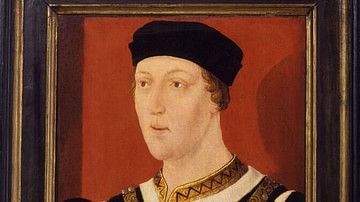
Image
Portait of Henry VI of England
A contemporary portrait of Henry VI of England (r. 1422-1461 & 1470-1471 CE). Made by an unknown artist c. 1540 CE. Oil on panel. 318 mm x 254 mm (12 1/2 i. x 10 in).
(Courtesy of National Portrait Gallery)
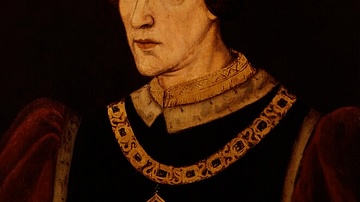
Image
Henry VI of England, National Portrait Gallery
King Henry VI of England (r. 1422-1461 & 1470-1471 CE). Painted by an unknown artist in the late 16th or 17th Century CE. Oil on panel. 533 mm x 445 mm (21 in x 17 1/2 in).
(Courtesy of National Portrait Gallery)
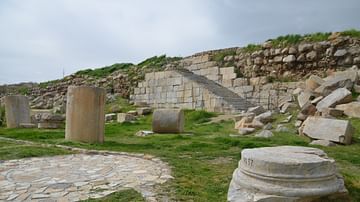
Image
Temple of Anahita at Kangavar, Iran
The remains of the Temple of Anahita at Kangavar, Iran. The temple was a major sanctuary erected to the goddess of waters and fertility who was worshipped in ancient Persia alongside Ahura Mazda. Dating back to the Seleucid or Parthian eras...
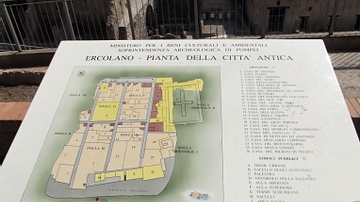
Image
Map of Herculaneum
Map of the ancient Roman town of Herculaneum.
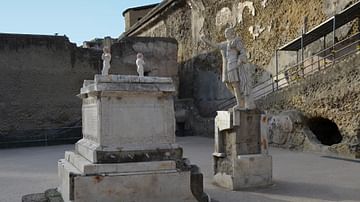
Image
Funerary Altar and Statue of Marcus Nonius Balbus in Herculaneum
Marcus Nonius Balbus was a prominent figure of Herculaneum during the Augustan period (27 BCE - 14 CE). He embellished the town with civic monuments and public facilities. His generosity to Herculaneum is preserved in inscriptions, and at...
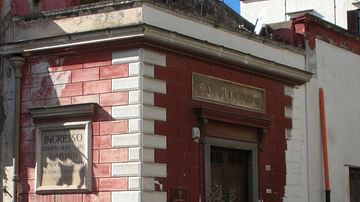
Image
Entrance to the Underground Theatre of Herculaneum
The ancient theatre of Herculaneum was first discovered in 1709 by a farmer who was digging a well and was later excavated by tunnelling down through the volcanic rock. The theatre was built of stone in the Augustan period (27 BCE – 14 CE...
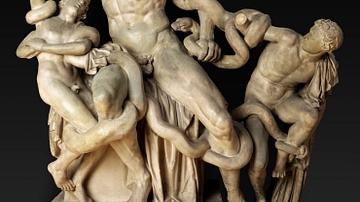
Image
Plaster Copy of the Laocoön Group
Plaster copy of the Laocoön group. Allard Pierson, University of Amsterdam, (APM 16.097). The sculpture was shown in this way for four centuries. Laocoön's outstretched arm, the arm of the younger son and parts of the snake are early-modern...
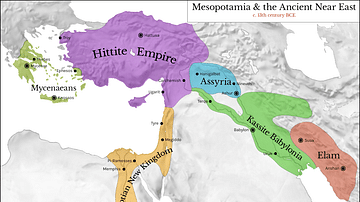
Image
Map of Mesopotamia and the Ancient Near East, c. 1300 BCE
Map of Mesopotamia and the Ancient Near East c. 1300 BCE, showing the period of Great Powers, with the six large kingdoms and empires (the Hittites, the Mycenaean Civilization, Assyria, Babylonia, Elam and the New Kingdom of Egypt) co-existing...
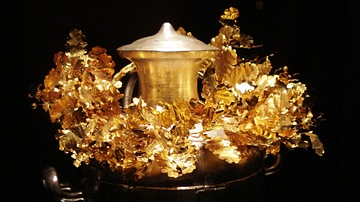
Image
Macedonian Gold Wreath from Vergina
A gold oak wreath and two-handled silver vessel (ampulla) from the main chamber of Tomb II, in the Royal Tombs at Aegae (Vergina).
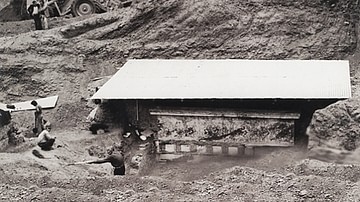
Image
Excavation of the Vaulted Tomb at Aegae, Vergina
The roof and facade of the vaulted tomb in Aegae (Vergina) emerging from the soil in 1977 CE. From Unearthing the Family of Alexander the Great. Grant (2019) p51. Used with permission from Pen & Sword Books.